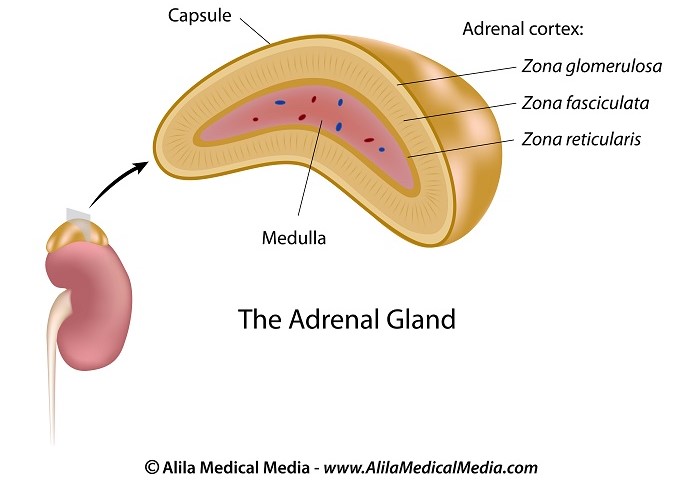The Adrenal Gland A&P Explained Clearly
Anatomy and Physiology of the Adrenal Gland in 5 minutes.
This lesson includes an animated video lecture, downloadable images, quiz questions and a PDF
The adrenal glands are a pair of glands sitting on top of the kidneys. Each gland consists of an outer cortex of glandular tissue, and an inner medulla of nervous tissue. 
The adrenal cortex produces a variety of steroid hormones, all of which are based on cholesterol. The cortex has three layers: zona glomerulosa, zona fasciculata, and zona reticularis. Each layer secretes its own set of hormones.
- The outermost layer, zona glomerulosa, produces mineralocorticoids, so named for their role in regulating minerals, in particular sodium and potassium. These hormones primarily act on the kidneys to control fluid and electrolyte balance.
The major mineralocorticoid is aldosterone. Aldosterone increases potassium excretion, as well as sodium and water retention by the kidneys, thereby increasing blood volume and blood pressure.
Subscribe to one of the courses below to continue!
This content is available within the following courses:

Anatomy and Physiology: More than 80 animations, plus downloadable PDFs, downloadable images, and quizzes.

Anatomy and Physiology: More than 80 animations, plus downloadable PDFs, downloadable images, and quizzes.